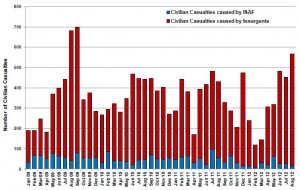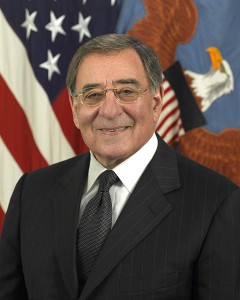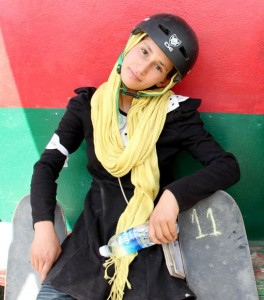Defense Secretary Leon Panetta looks as though he is going to be the last person on the planet to realize what a failure US strategy in Afghanistan has become. Today, while visiting New Zealand, he announced that the final surge troops have left Afghanistan, returning troop levels to 68,000 from a high of 101,000 at the peak of the surge President Obama ordered at the end of his first year in office.
The Washington Post set Panetta’s “success” language apart from other comments:
“There’s no question there will continue to be difficult days ahead in this campaign,” Panetta said at a news conference in Auckland, where he was making a visit, in part, to thank New Zealand for its contribution of about 180 troops to the NATO-led coalition in Afghanistan. “But this is an opportunity to recognize that the surge did accomplish its objectives.”
The New York Times gave a bit more of Panetta’s statement:
“As we reflect on this moment, it is an opportunity to recognize that the surge accomplished its objectives of reversing Taliban momentum on the battlefield, and dramatically increased the size and capability of the Afghan National Security Forces,” Mr. Panetta said.
It’s not until the very end of the article however, where we learn that Panetta’s claims don’t hold up:
However, the level of violence remains higher than it had been before the surge forces came. In the first six months of 2012, for instance, 1,145 civilians were killed, compared with 1,267 in the same period of 2010, when surge forces were only just arriving.
How can it be that the Taliban’s momentum has been reversed if civilian deaths are now higher than before the surge? [Correction: as pointed out by harpie in comment number 1, although the Times says violence levels are higher after the surge, the civilian death rate post-surge is slightly lower rather than slightly higher.]
Besides allowing Panetta to deny the reality of a Taliban that has lost no strength, the Times article article allows an anonymous military spokesman to lie about changes in the size of Afghan security forces during the surge:
“What did the surge give us?” a senior American official reflected on Friday. “We’re going to hit a point where, I won’t say that’s as good as it gets, but now it’s up to them to hold what we gave them. Now really it’s Karzai’s turn.”
The official spoke on condition of anonymity as a matter of military policy.
The surge brought American troops to a high of 101,000, along with as many as another 50,000 coalition troops, mostly from NATO countries. Over the past three years, the increase in American troops helped to enable an accelerated training program, the senior American official said, with the Afghan police and army more than doubling in number by this year, to 300,000.
Two things stand out immediately in the numbers supplied by the anonymous spokesman. First, until this statement, all recent stories have been referring to the size of the ANSF as 350,000. How did the number drop by 50,000? Is this a result of the re-screening that Afghanistan has been carrying out? This chart shows that the Afghan National Army, which accounts for about two thirds of the ANSF, saw a maximum attrition rate of just under 5600 in one month, so attrition alone cannot account for this large drop. [Note: I noticed when I checked the article again after 2 pm that the 300,000 number has been revised to 350,000. There is no indication within the article or at the usual slot at the bottom of the page where corrections are usually noted that this change has taken place. I had already pointed out that the military source was lying whether we used 300,000 or 350,000 as the current ANSF level.]
But the other thing that stands out in this anonymous statement is an outright lie. The official claims that during the surge, the ANSF “more than” doubled to 300,000. This Brookings publication (pdf) documents force size for the ANA and ANP, and it shows that in December 2009, when Obama ordered the surge, the force size was 195,089. If we use the source’s 300,000 figure for the current size, the current force is only 1.54 times the previous size, not more than twice. Even if we use the 350,000 figure that was used in all previous statements, the ratio only improves to 1.79, still well below twice the original size.
The military can lie all it wants, but it still cannot hide its failures in Afghanistan.



